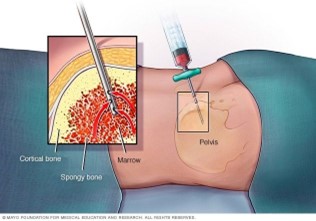A client receiving cognitive behavior therapy (CBT) is introduced to the concepts guiding the therapy. Which statement best explains automatic thoughts?
"Automatic thoughts are typically positive and based on fact'
“Automatic thoughts are often influenced by our childhood
“Automatic thoughts occur rapidly in a situation and without rational analysis.'
The Correct Answer is C
In cognitive behavior therapy (CBT), automatic thoughts refer to the rapid, subconscious thoughts that occur in response to a particular situation or event. These thoughts are automatic, meaning that they occur quickly and without conscious effort, and are often negative or distorted in nature. They are not necessarily based on fact or reality, and may be influenced by past experiences or beliefs. The goal of CBT is to identify and challenge these automatic thoughts, and replace them with more realistic and positive ones. Therefore, option c is the best explanation of automatic thoughts in the context of CBT. Options a and d are incorrect because automatic thoughts are not necessarily positive or indicative of psychiatric disorders. Option b is partially correct but does not fully capture the nature of automatic thoughts.
Nursing Test Bank
Naxlex Comprehensive Predictor Exams
Related Questions
Correct Answer is C
Explanation
The client is experiencing fear and anxiety while awaiting the biopsy report, which is a common reaction.

Response a, “Worrying is not going to help the situation," may come across as dismissive or insensitive, and may make the client feel like their emotions are not valid.
Response b, “Let’s wait until we hear what the biopsy report says," may be appropriate in some situations, but it does not acknowledge the client's emotions or offer any support.
Response d, “Operations are not performed unless there are no other options,” is not a relevant response to the client's fear of a cancer diagnosis.
The most appropriate response, option c, acknowledges the client's feelings and offers support, which can help the client feel heard and validated. The nurse can also offer additional support by providing information on coping mechanisms or resources available to the client to help them manage their anxiety while they wait for the results.
Correct Answer is D
Explanation
working with a client in crisis, the nurse’s priority intervention should be to ensure the client’s safety. This involves assessing the client’s risk for harm to themselves or others and taking appropriate measures to prevent harm. Once the client’s safety has been ensured, the nurse can then focus on other interventions such as decreasing the client’s anxiety and identifying previous experiences and coping methods used.
Whether you are a student looking to ace your exams or a practicing nurse seeking to enhance your expertise , our nursing education contents will empower you with the confidence and competence to make a difference in the lives of patients and become a respected leader in the healthcare field.
Visit Naxlex, invest in your future and unlock endless possibilities with our unparalleled nursing education contents today
Report Wrong Answer on the Current Question
Do you disagree with the answer? If yes, what is your expected answer? Explain.
Kindly be descriptive with the issue you are facing.
